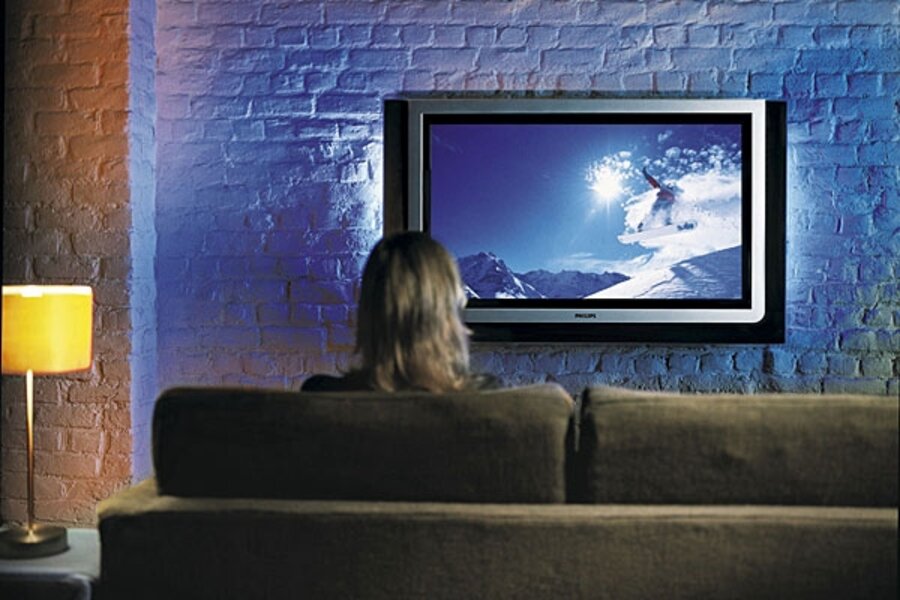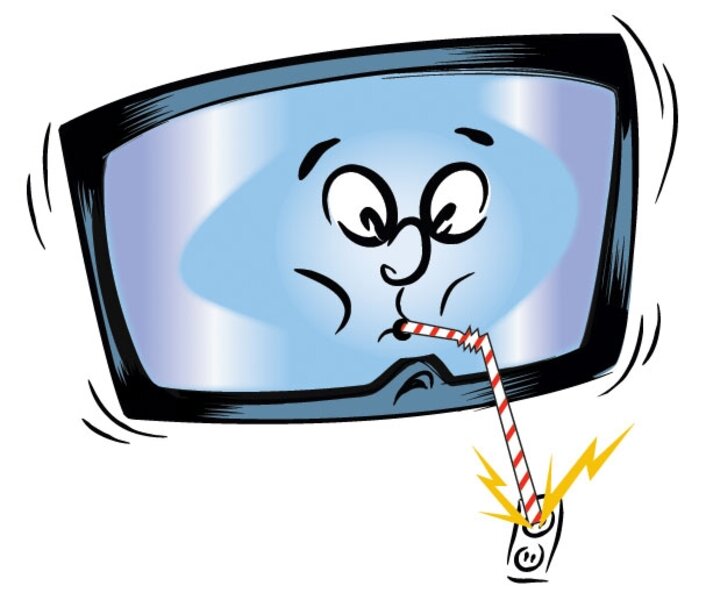Taking aim at energy-sucking TVs
Loading...
Television's high-definition era has done an impressive job of bringing theaterlike experiences to the not-so-small screen. New tube TVs are hard to come by these days, as stores make room for flat-panel models measuring 50 inches or more.
But it takes a lot of energy to power those millions of pixels – enough that the US Environmental Protection Agency suggested in September that perhaps there is such a thing as a television that's too big.
As picture quality improves, television sets are sucking down an increasing share of home-energy costs. America's TVs consume "4 percent of all households' electricity use," reports the federal energy-efficiency program, Energy Star. "This is enough electricity to power all the homes in the state of New York for an entire year."
Three things contribute to televisions' growing appetite: technology, size, and brightness.
Plasma TVs in particular crave a disproportionate energy appetite, placing them close to refrigerators in terms of monthly energy use. An average 50-inch plasma TV, lauded for its top-notch colors and image contrast, guzzles 375 watts of power, according to Energy Star. A similarly sized LCD set wants just half that – 180 watts. (LED-lit LCD sets, still relatively new and high priced, use even less.)
If you think in terms of energy used per inch, tube TVs aren't that much more efficient than LCDs. However, tubes rarely outgrew 32 inches. Many electronics stores now stick LCDs that size in the "small television" section.
Concerned about the rapid growth in screen sizes, Energy Star started pushing back. The program tracks and certifies efficient home appliances. Most TVs currently meet its standard for energy use, although conforming to it is not required by law.
In September, Energy Star unveiled its guidelines for 2010. Starting next May, TVs will need to be 40 percent more efficient than today's standard to receive Energy Star certification. By May 2012, the bar rises to 65 percent.
The new rule will be particularly strict on TVs larger than 50 inches – suggesting that Americans really don't need a plus-sized TV set.
The EPA, which helps run Energy Star, will put in place "a requirement that TVs greater than 50 inches in size meet the same On Mode requirements as a screen of 50 inches – 108 watts," said the EPA's Katharine Kaplan in announcing the new benchmarks.
The agency considered disqualifying all TVs that were larger than 50 inches – sending a stronger message about their excesses. But Kaplan explains that the EPA didn't want to needlessly exclude innovative companies that could engineer enormous yet efficient models.
For example, CNET's TV reviewers found a 50-inch Vizio plasma that sucks down 474 watts and a 50-inch Panasonic that sips just 163 watts.
Regardless of the size or technology of your TV, brightness can significantly sway its energy diet. If you're concerned about your energy bill, consider dialing down the television's settings. Even a slightly dimmer picture can ease your TV's thirst.






